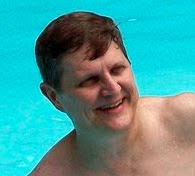 |
| Sullivan's Wainwright Building |
“All things in nature have a shape, that is to say, a form, an outward semblance, that tells us what they are ... Unfailing in nature these shapes express the inner life, the native quality ... It is the pervading law of all things ... that the life is recognizable in its expression, that form ever follows function. This is the law.”
Sullivan’s context was the architecture of buildings. His motivation was to express a guiding principle for design. In his ideal, great architecture makes manifest a synthesis of beauty and logic, of form and function. And when achieved, we behold it as ineffable.
Ludwig Wittgenstein, in addition to producing his influential philosophical output, also tried his hand at architecture, designing a house for his sister. He commented in one of his notebooks that “Working in philosophy - like work in architecture in many respects - is really more a working on oneself. On one’s own interpretation. On one’s way of seeing things. (And what one expects of them.)" (Culture and Value, 16e).
These references came to my mind a few years ago as I prepared a talk for a retreat at my parish. Part of my talk was to be a reflection on the importance of regularly receiving the Sacraments and especially of regular attendance at Mass. Such participation was important, I thought, even if we do not completely understand why. In contemplating how I might express this, Sullivan's “form follows function” seemed to jingle around in my head as perhaps being relevant. I felt that I was searching for an answer to the question - “What outward form would we manifest if our function in life is to participate in the earthly expression of the beauty and logic of God’s creation?”
As it finally came out in my talk, I suggested that in the presence of doubt, it is important to “adopt the form while seeking the function”. I offered witness to this, and said that by regularly receiving the Sacraments, we surrender ourselves to a process of formation that in turn provides a setting for revelation to take place in our lives. And by this I mean we are strengthened in our faith in a way that reason alone cannot provide. The ineffable becomes intelligible. Such formation implies change, albeit gradual. For if we, however immodestly, consider ourselves to be fully formed, there would be no need for change. Formation is a genesis, a development, an emergence.
It was a short time after this retreat that the pattern of daily Mass and daily prayer (in the Benedictine tradition) became a part of my life. It is probably fair to say that I was “working on myself” more than on my listeners when I shared my reflection. And some years hence, I now see something else that is functioning within this form, this pattern of daily life. Architecturally, the correspondent would be Frank Lloyd Wright's maxim, which evolved from that of his teacher, Sullivan. Wright stated that "form and function are one".

No comments:
Post a Comment